Look no further for the best almond flour recipes with over 35 recipes for almond flour desserts, breads, pancakes, muffins, savory dinners, and snacks all in one place! Many are perfect for gluten-free, paleo, low carb, and keto diets. Learn how to make almond flour at home, the benefits, nutrition, and tricks for making recipes a success!
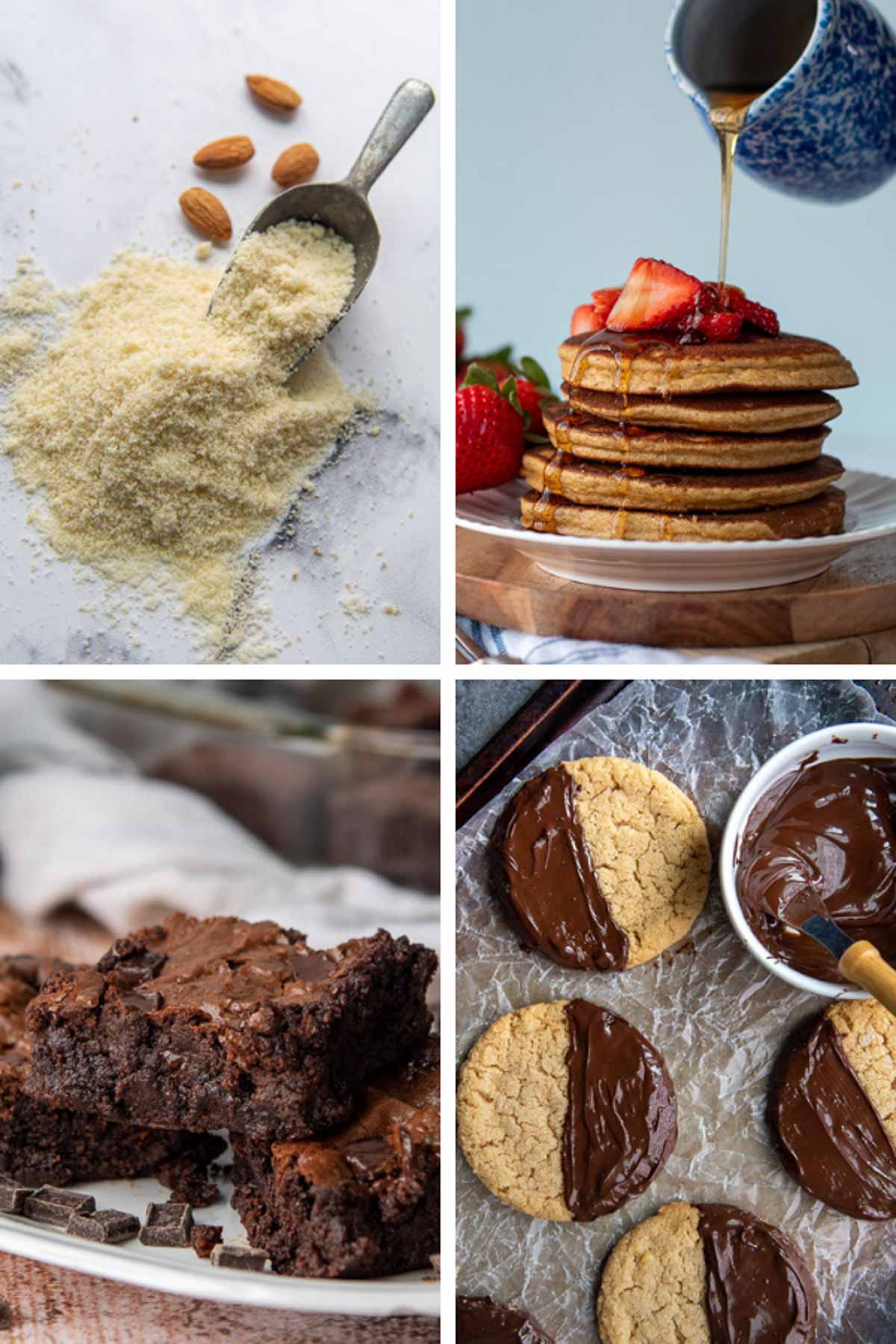
Benefits of Cooking and Baking with Almond Flour
Almond flour has increasingly gained in popularity because of how it fits in specialized diets, such as a low carb, paleo, keto or gluten-free diet. However, many of the benefits go beyond just nutrition.
Easy almond flour recipes makes baked goods and savory dishes taste rich and satisfying, and includes great nutritional value. Since it is made from ground almonds, all the health benefits that apply to eating almonds also apply to almond flour.
It’s also grain-free, dairy-free, high in fat and low in carbs, making it a healthy alternative to regular flour or all purpose gluten-free flour. In fact, you can even make homemade almond flour to save money!
When making recipes with almond flour, be sure to follow specific recipes designed for that type of flour. You can find many right on this site, while my gluten-free cookbook and this helpful gluten-free baking guide focuses on using all purpose gluten-free flour.
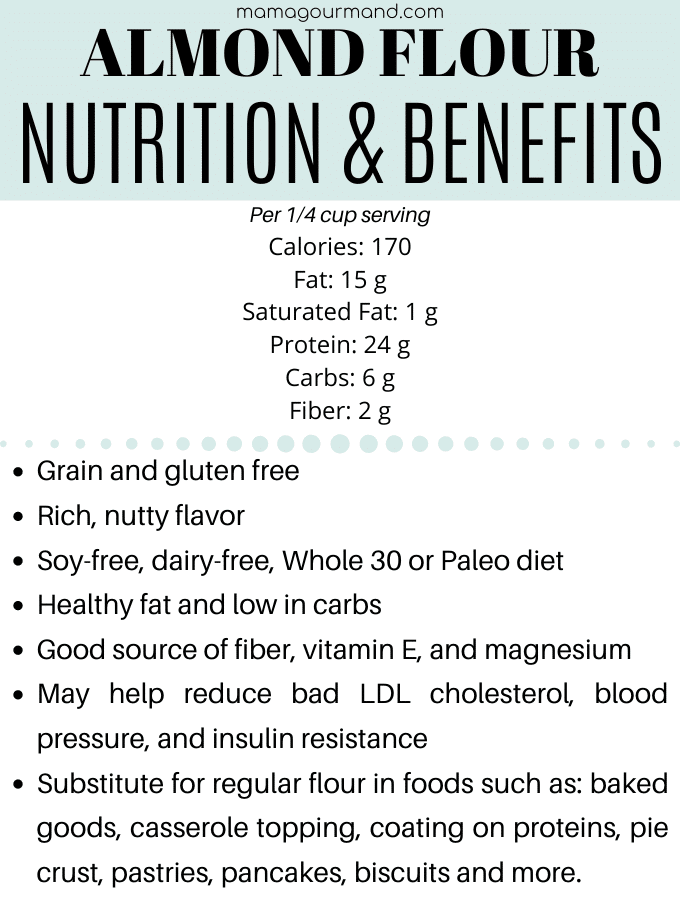
Almond Flour Nutrition
According to the USDA, it provides the following nutritional value per 1/4 cup serving. Wheat flour contains 102 calories, .5 grams fat, 22 grams carbs, and 4 grams protein.
- Calories: 170
- Fat: 15 g
- Saturated fat: 1 g
- Protein: 24 g
- Carbs: 6 g
- Fiber: 2 g
- Sugar: 1 g
- Sodium: 0 mg
- Calcium: 66 mg
- Iron: 1 mg
- Potassium: 190 mg
Almond Flour Benefits
Recipes using almond flour have gained in popularity due to some of the health benefits listed below and the rich, nutty flavor it adds to dishes.
- High in healthy fat and low in carbohydrates
- Good source of fiber, vitamin E, monounsaturated fats and magnesium
- May help reduce bad LDL cholesterol, blood pressure and insulin resistance
- Can be used as a substitute for regular flour in foods such as: baked goods, casserole topping, coating on proteins, pie crust, pastries, pancakes, biscuits and more.
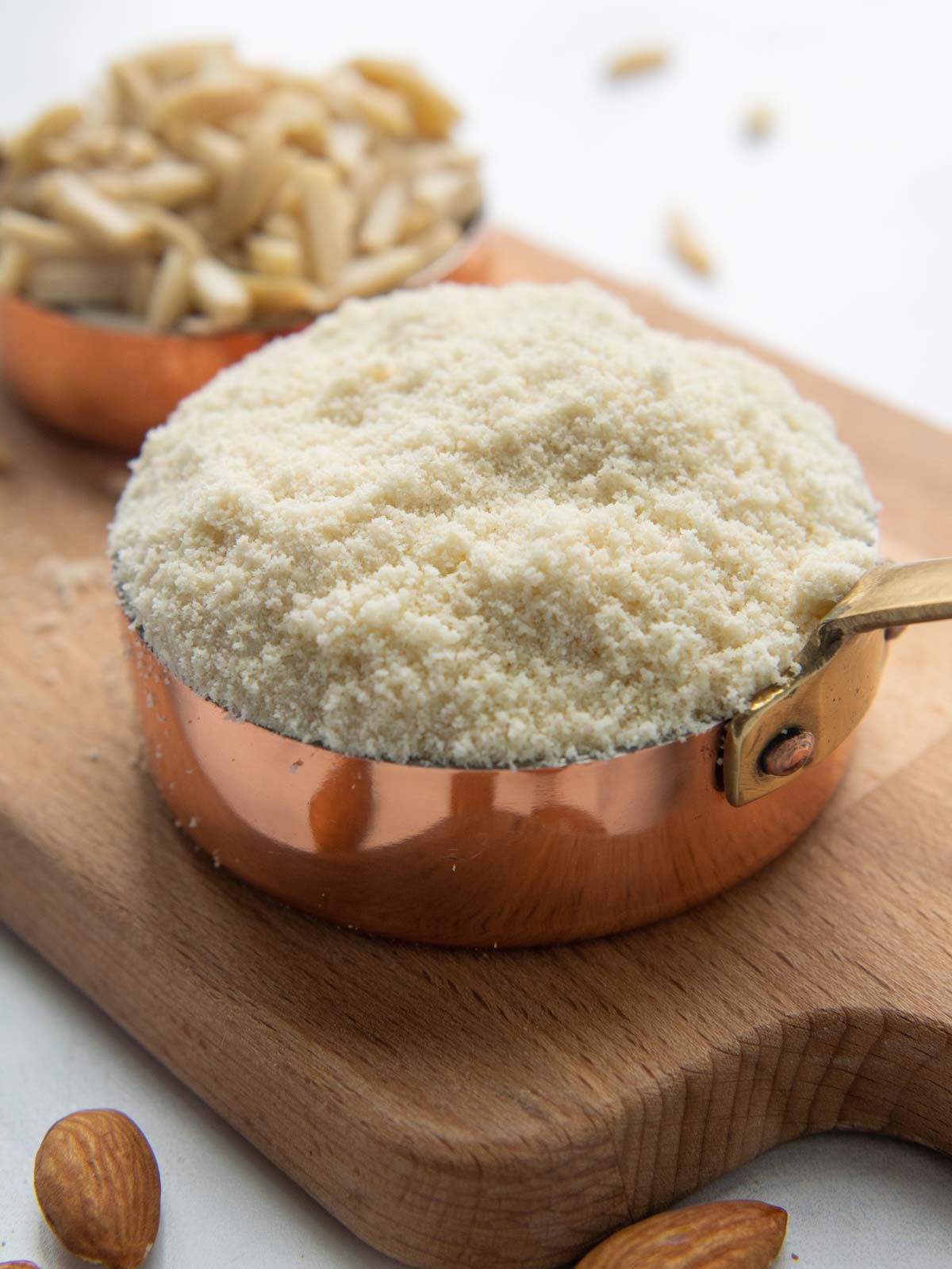
Almond flour vs almond meal
Blanched Almond Flour:
A blanched almond means the layer of skin enclosing the nut has been removed. Because blanched almond flour is ground almonds without their skin, it will have a consistent cream color (free of red-brown flecks of skin), as well as a smooth texture.
It is also more finely ground, lighter, and particularly good for making pastries and other delicate baked goods. Removing the skin does not impact the nutritional benefit. Whether the flour is blanched or unblanched, the benefits remain the same.
Suggested Uses: cookies, brownies, pastries, macarons, pancakes, cakes
Almond Meal:
For the most part, almond meal can be used interchangeably with almond flour. Almond meal is made of unblanched almonds, or almonds with their skins on.
It is less finely ground than blanched flour. This gives it a more coarse texture, which makes it great for gluten free bread crumbs and crust for proteins such as pork, chicken or fish.
Suggested Uses: bread crumbs, outer coating on proteins, scones, fruit crumble
Unblanched Almond Flour:
Unblanched almond flour means the almond skin has been left on. The red-brown flecks in the flour can affect the appearance of some dishes. This is beneficial for some dishes, giving it a more rustic look.
It is also said to be heavier than blanched almond flour. One deterrent can be that, while very healthy, unblanched flour is more fibrous than blanched flour and may cause digestive issues for some.
Suggested uses: pie crust, scones, biscuits
Almond Flour Dessert Recipes
Recipes with almond flour can be made into cookies, cakes, brownies, and more. Since almond flour is naturally gluten-free, this is especially good news for people who suffer from celiac or have gluten sensitivities.
For more gluten-free dessert recipes, be sure to check out 80+ Best Gluten-Free Desserts!
1. Almond Flour Chocolate Chip Cookies

2. Ultra-Fudgy Chocolate Brownies With Almond Flour
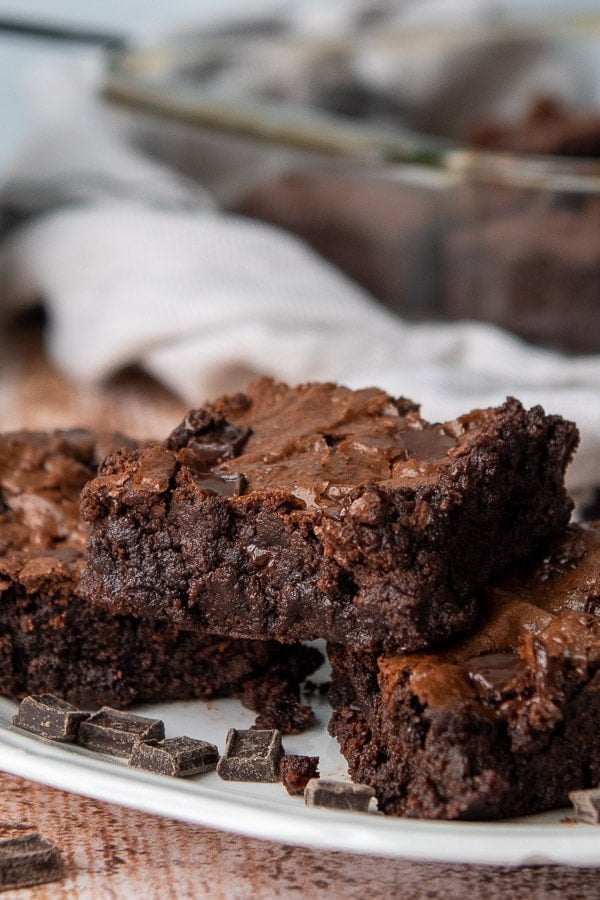
3. Fluffy Chocolate Almond Flour Cupcakes (Gluten-Free)

4. Soft & Chewy Almond Flour Blondies
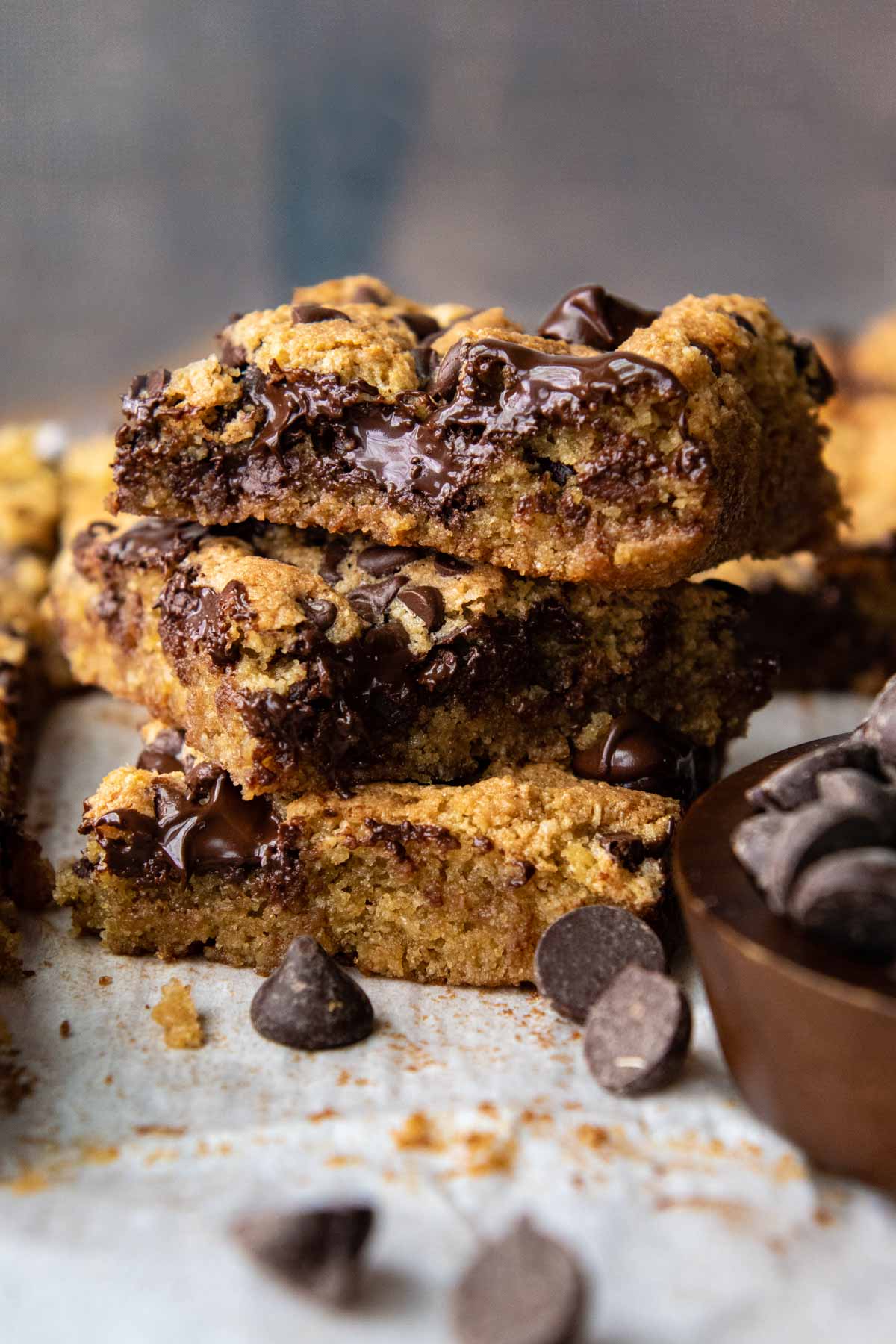
5. Easy 20-Minute Almond Flour Pie Crust
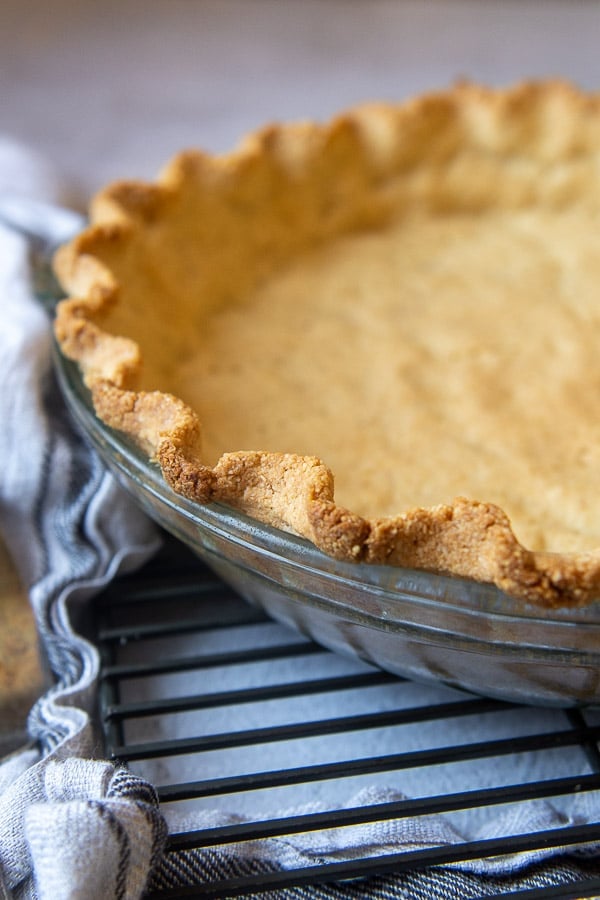
6. Gluten-Free Almond Flour Carrot Cake (Moist, Fluffy)
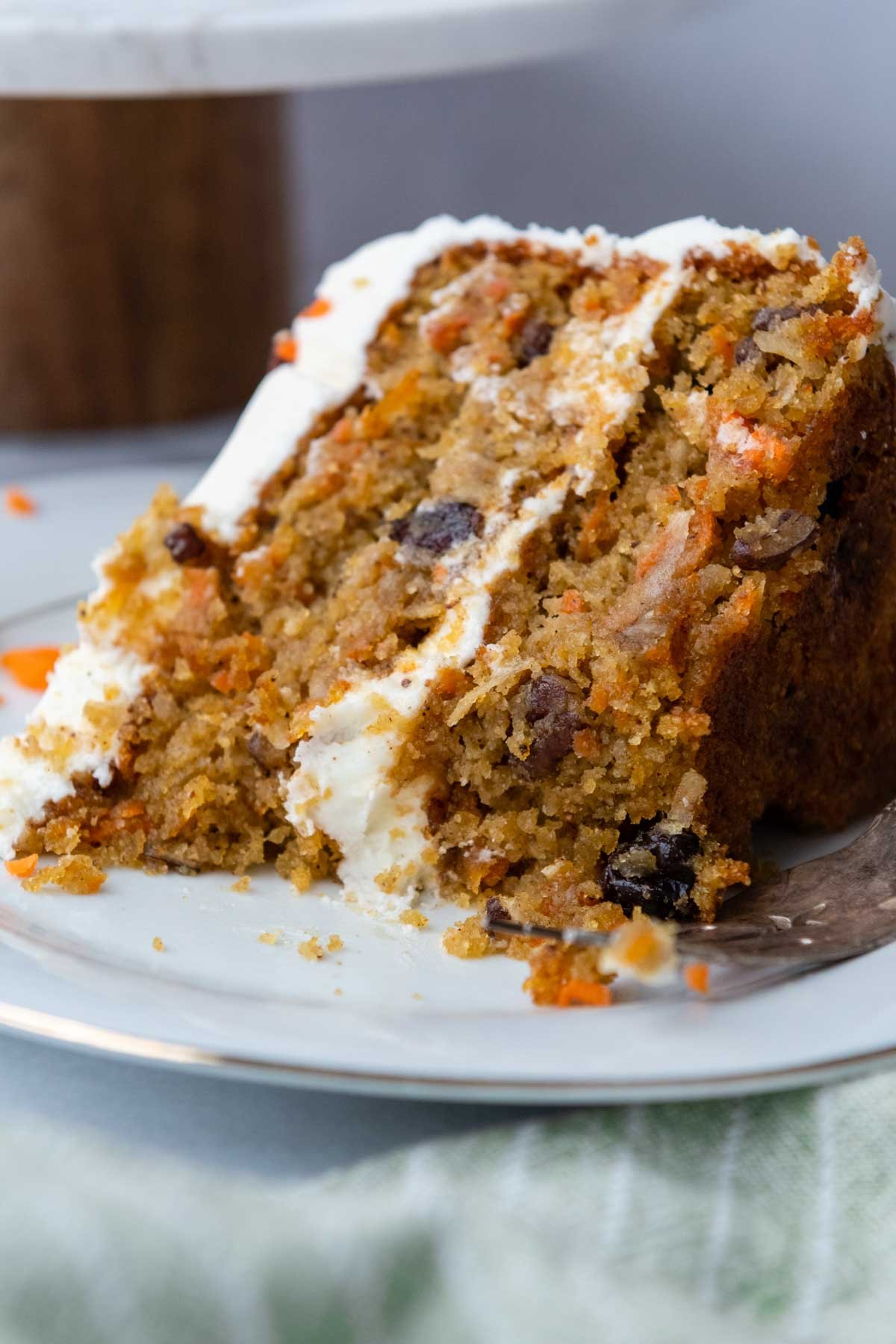
7. Moist, Fluffy Almond Flour Apple Cake (Gluten-Free)
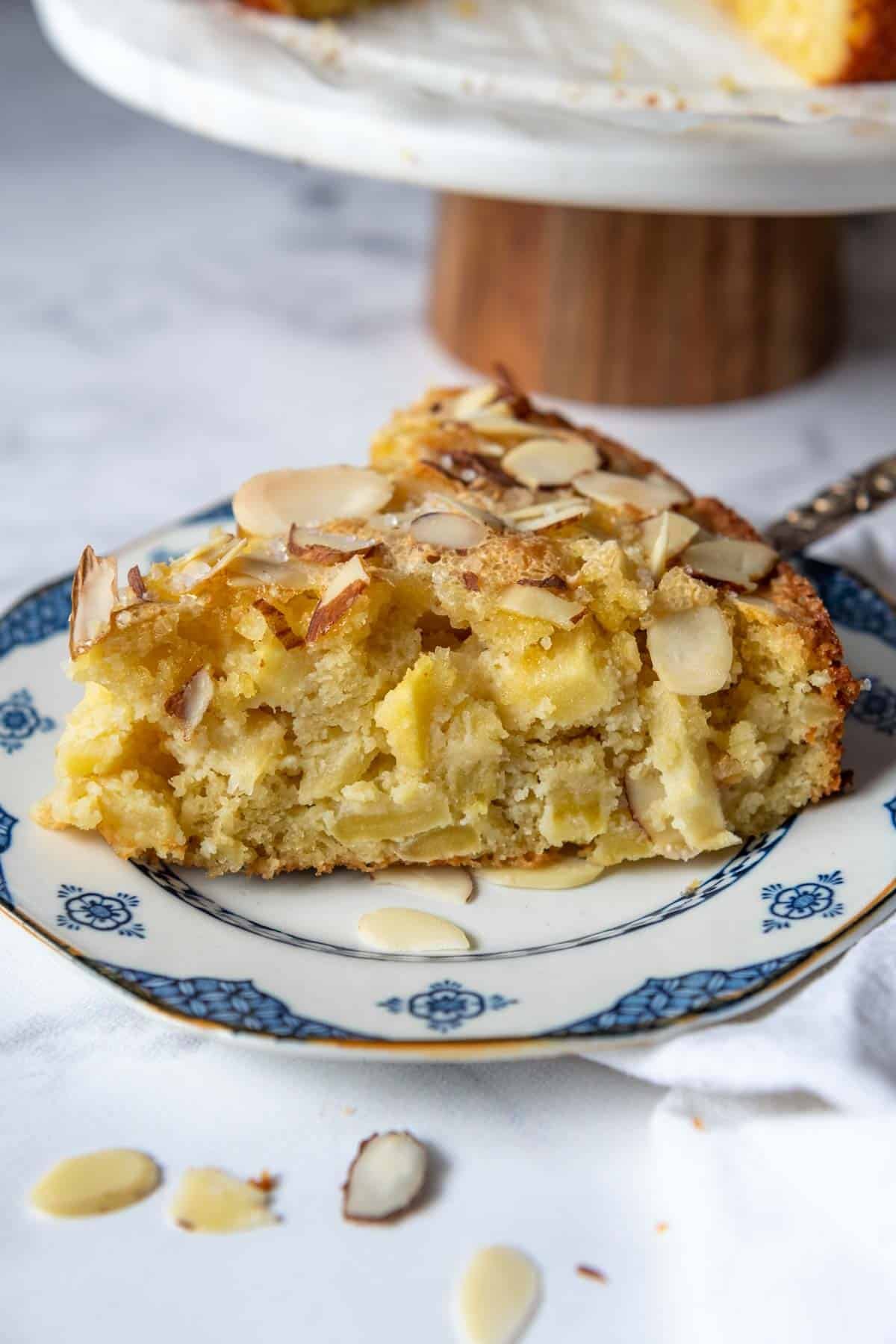
8. Extra Fluffy Almond Flour Pumpkin Muffins with Streusel
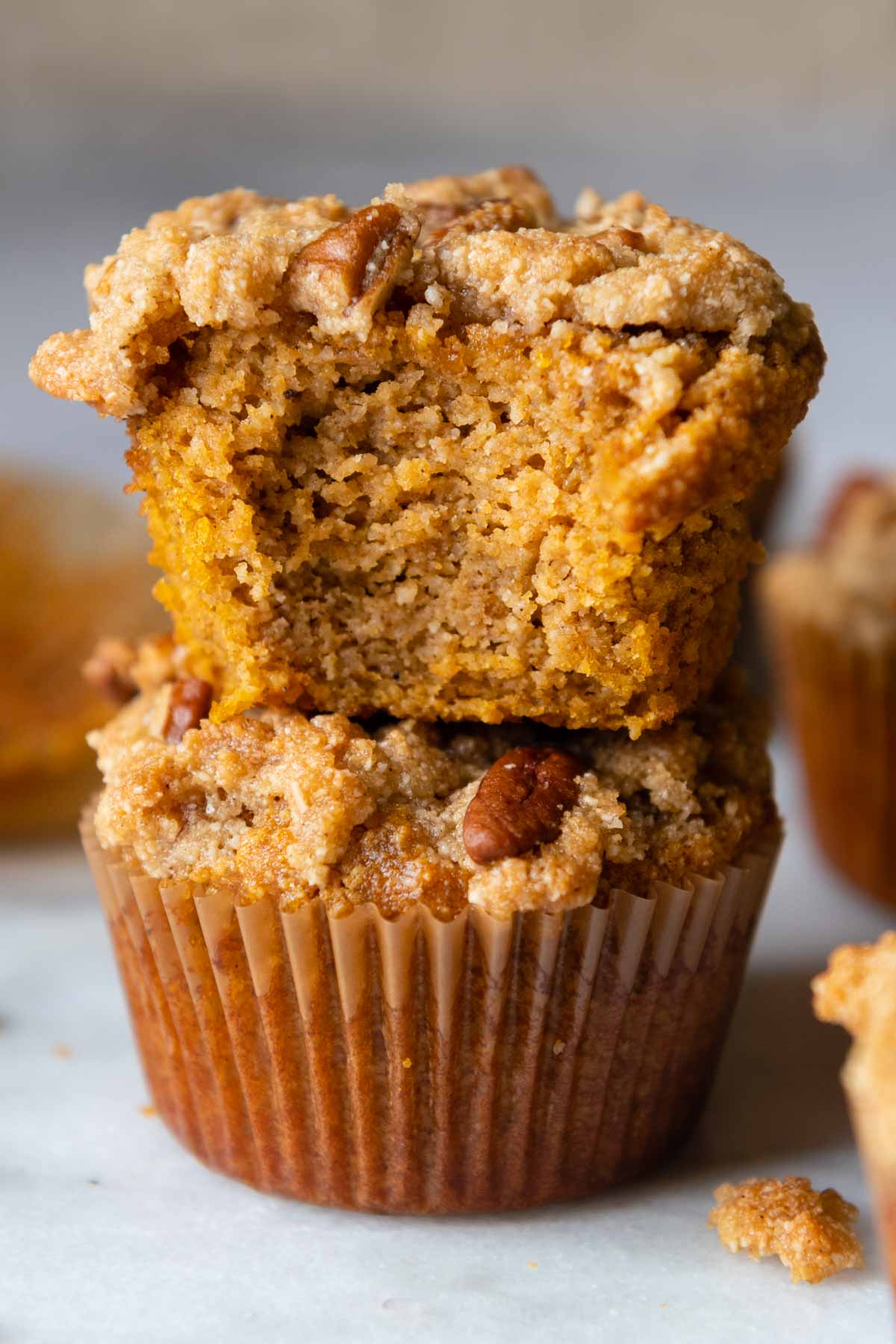
9. Almond Financiers (Easy French Dessert!)

10. Thick, Crispy Almond Flour Pizza Crust (30 Mins)

11. Almond Flour Peanut Butter Cookies
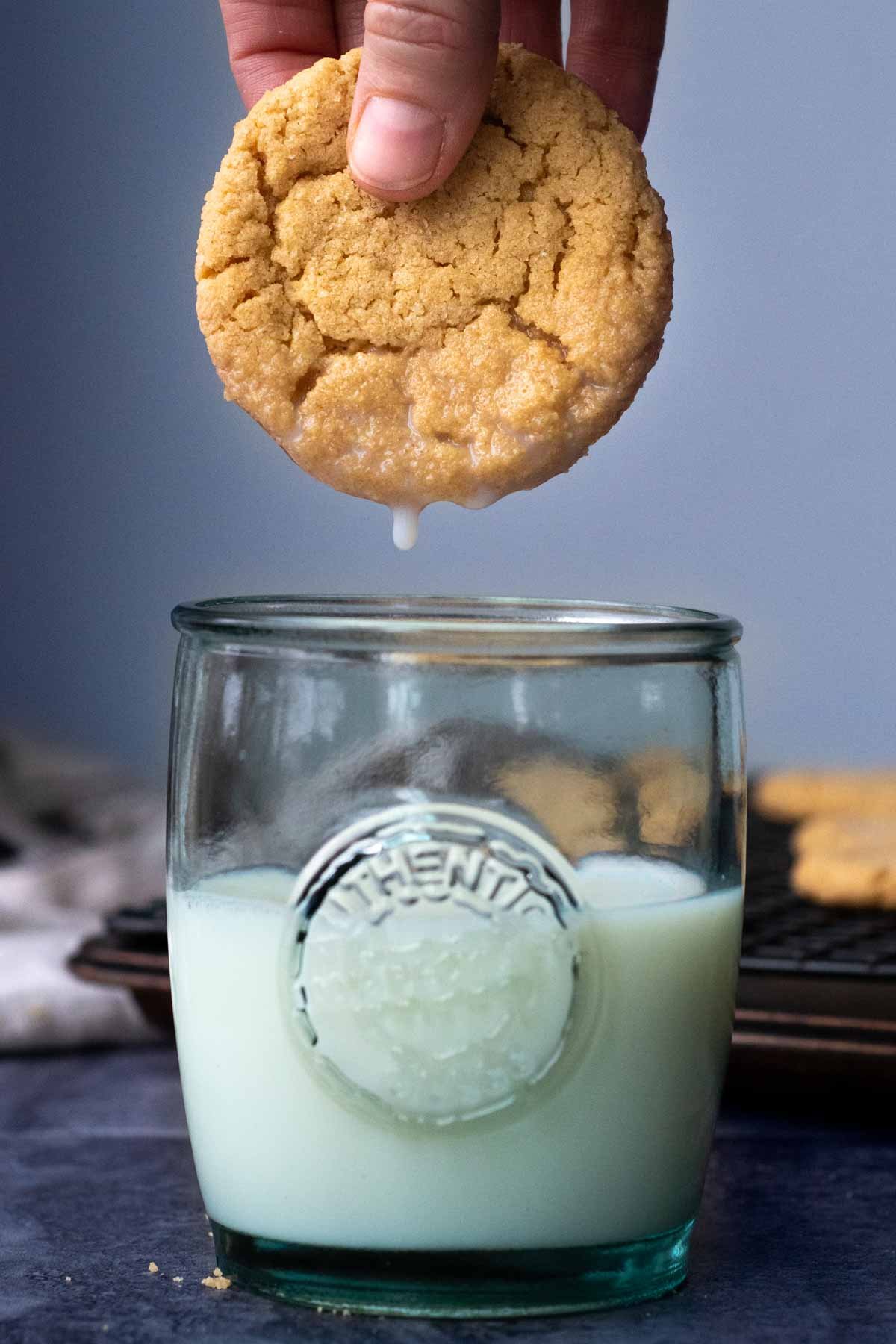
12. Chocolate Financiers

13. Soft & Chewy Oatmeal Cookies with Almond Flour
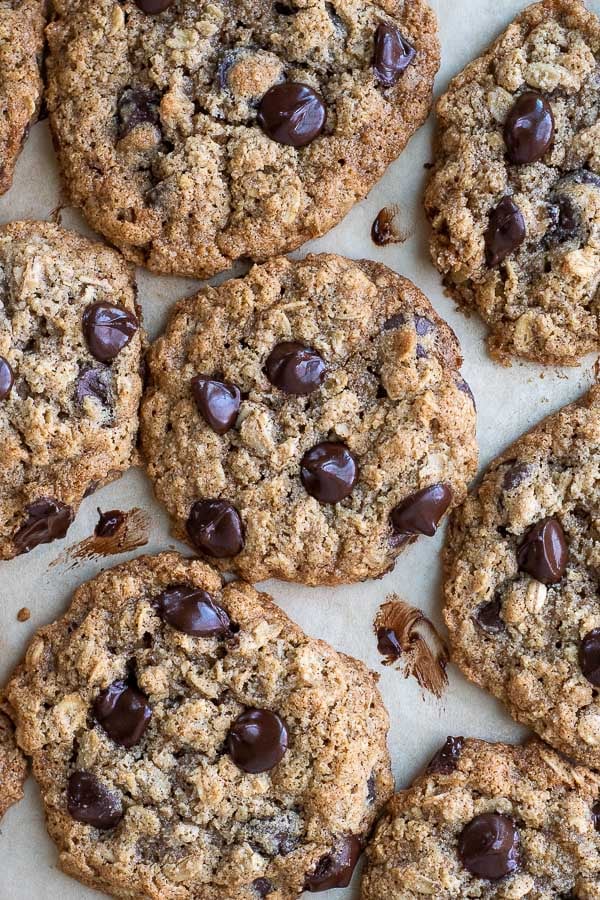
14. Italian Almond Paste Cookies
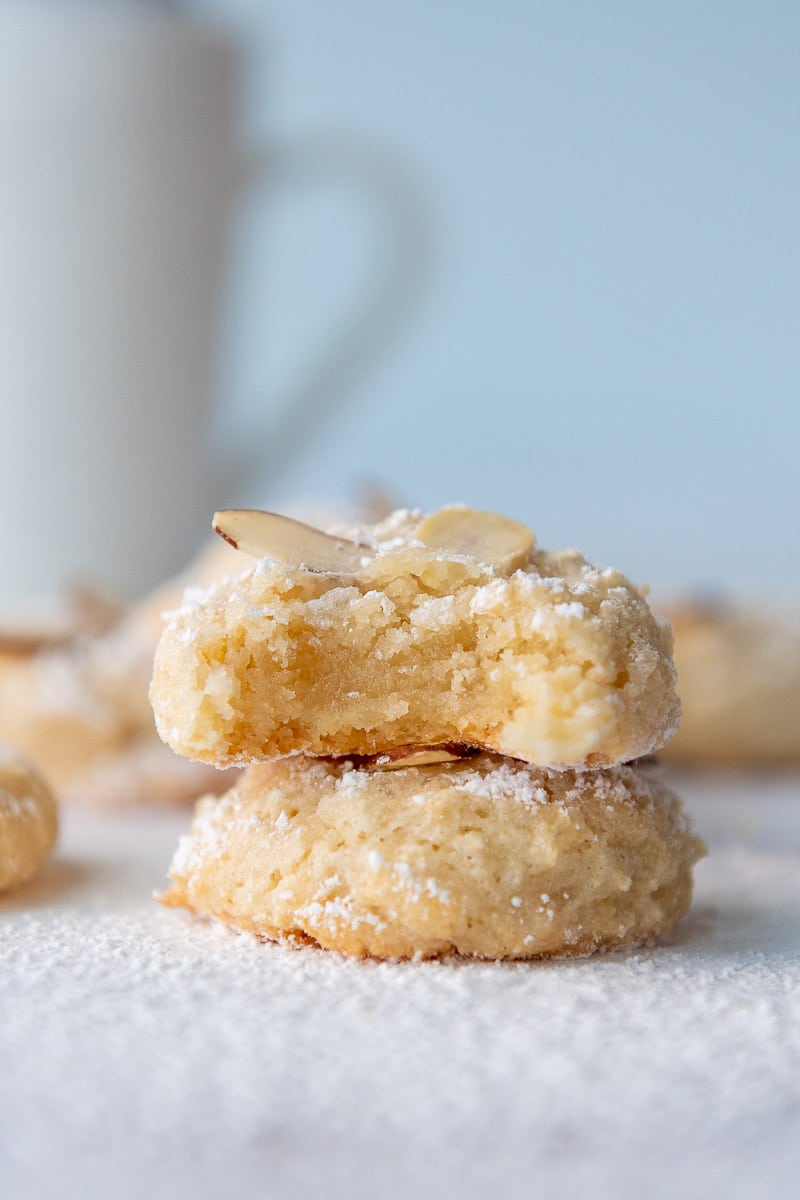
15. How to Make Chocolate Cake with Almond Flour
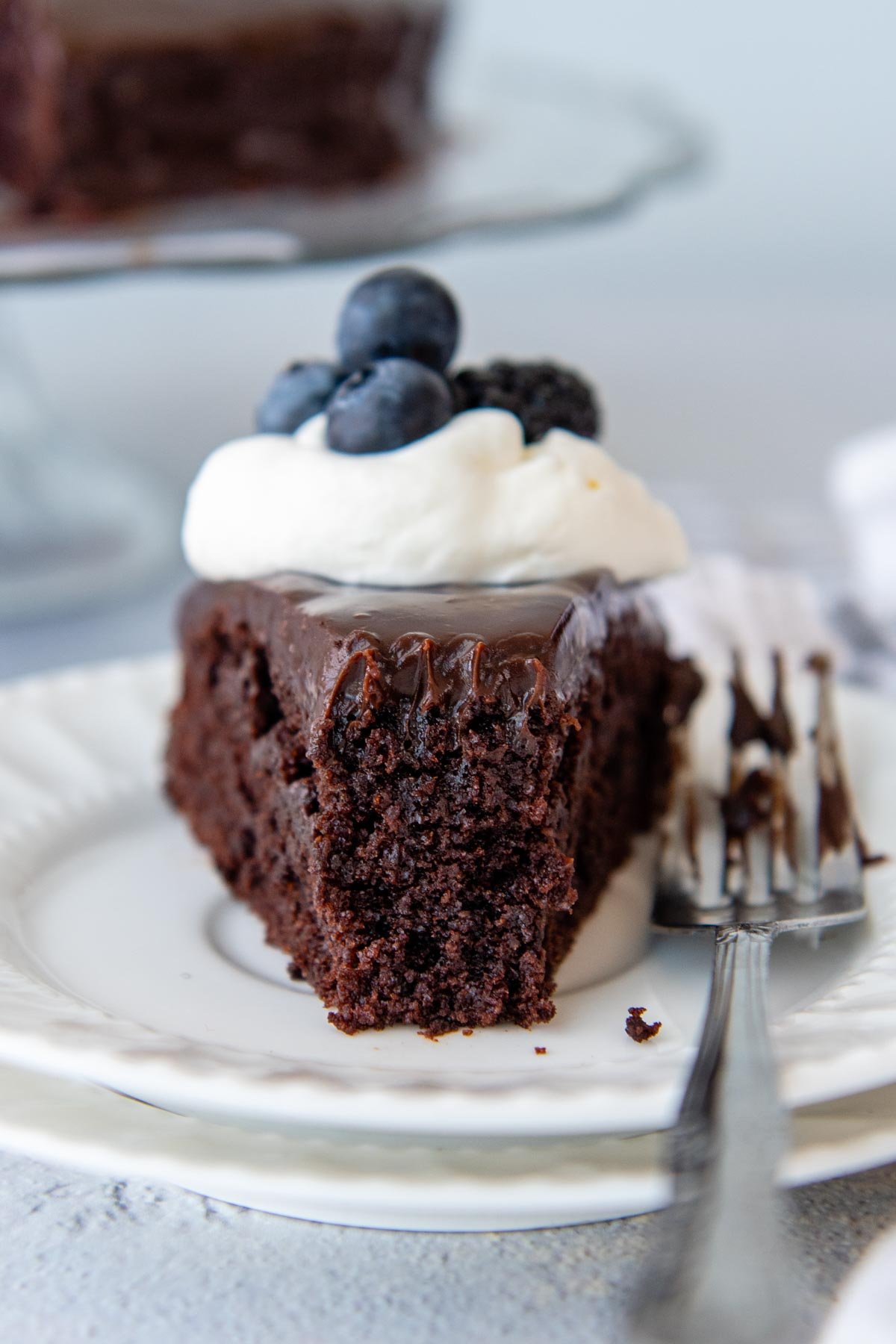
16. Crunchy Almond Flour Biscotti (Easy, Failproof Recipe)
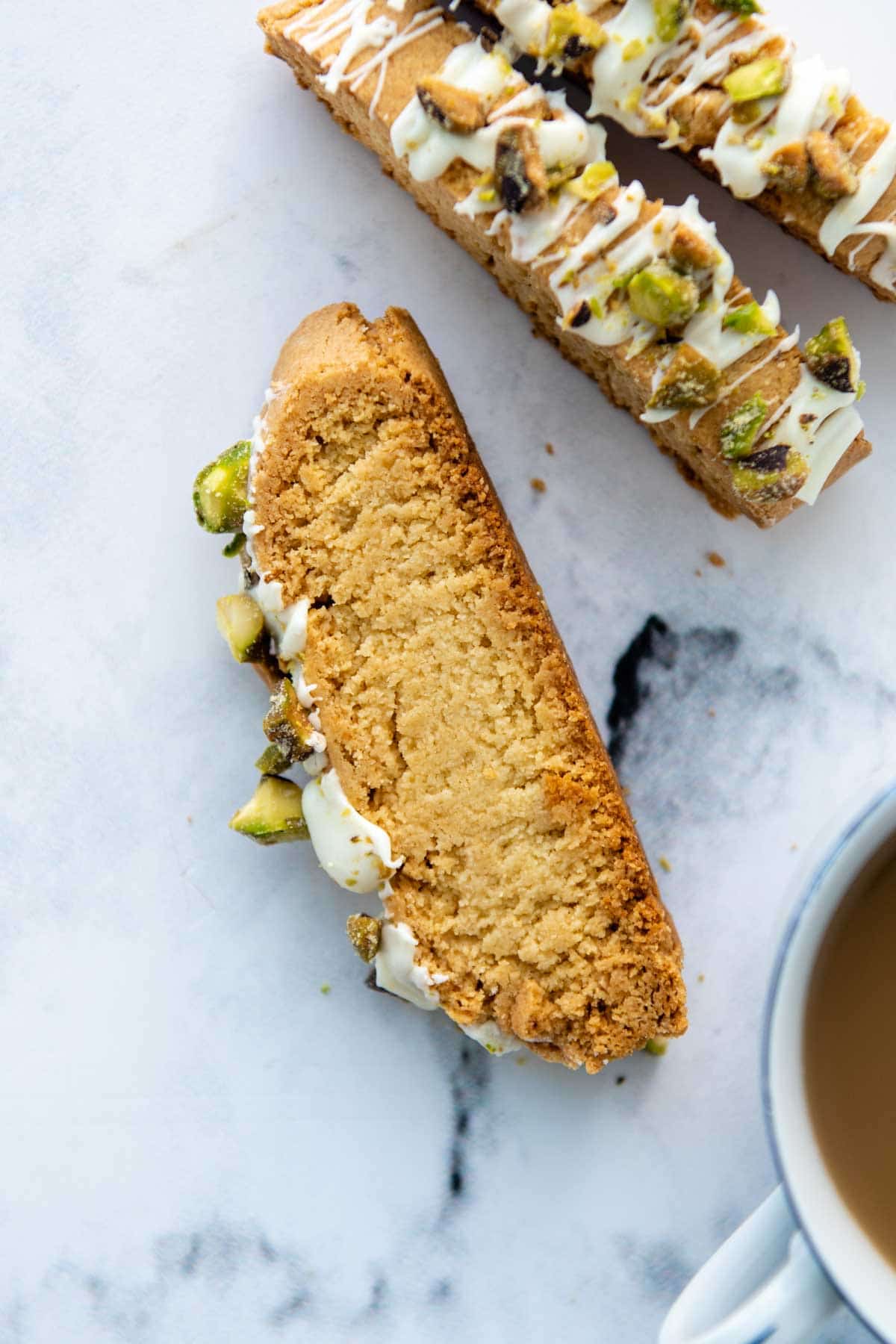
17. Fluffy Almond Flour Mug Cake in 2 Minutes
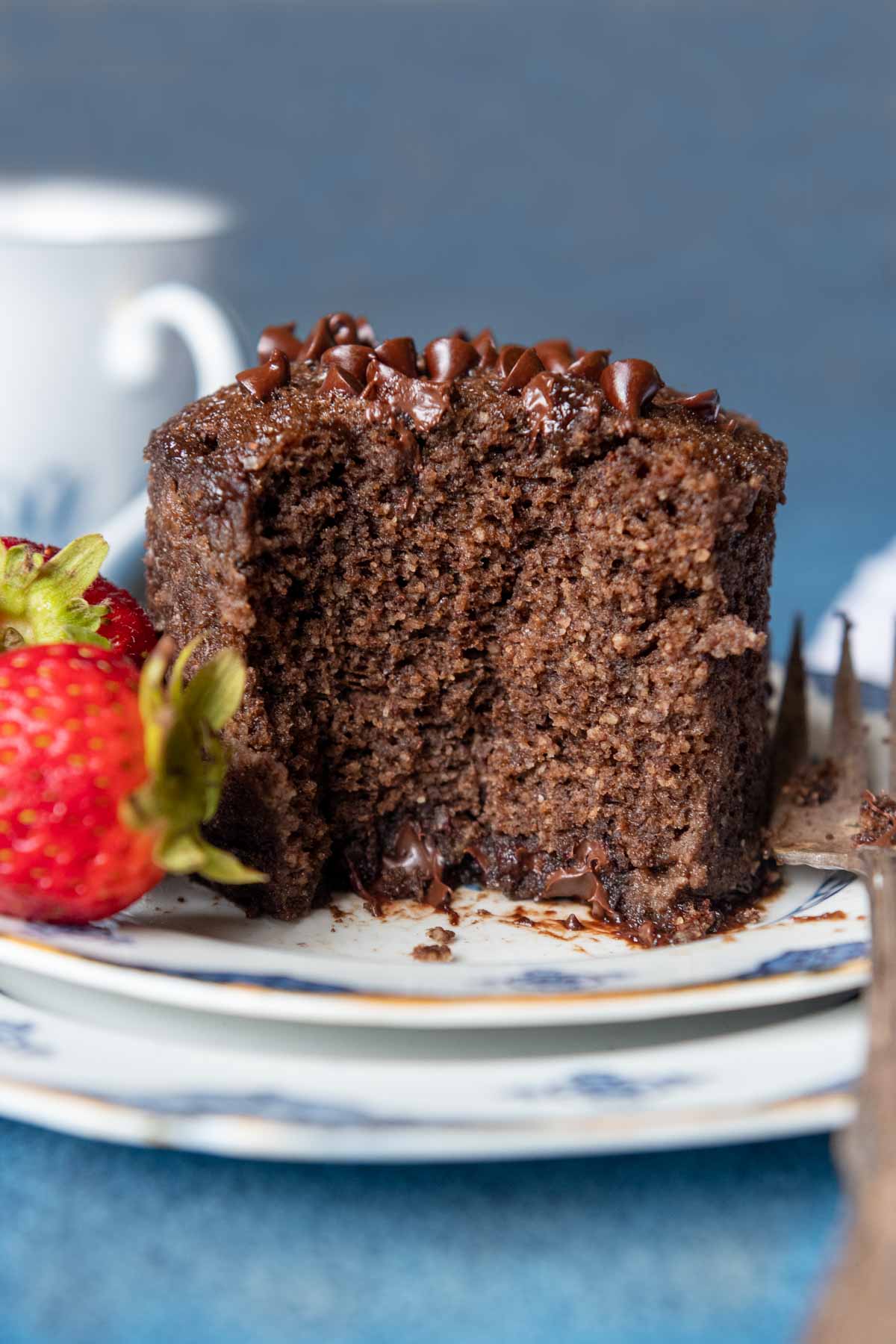
Almond Flour Muffins, Breads, Pancakes Recipes
By using almond flour in your muffins, bread and pancakes – your breakfast and sandwiches can be nutritious and just as tasty as it ever has been.
18. 15 Minute Almond Flour Banana Pancakes
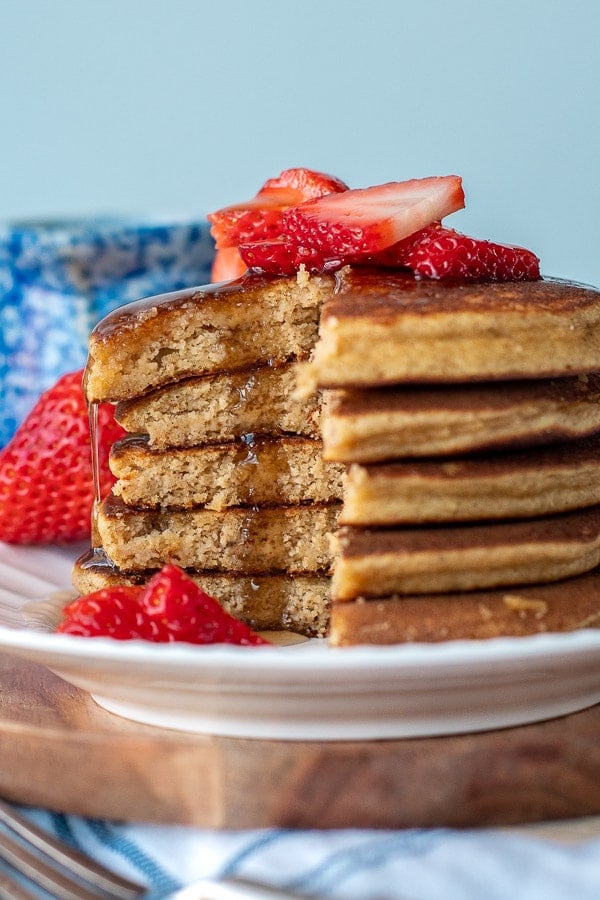
19. Easy 25-Minute Almond Flour Banana Muffins
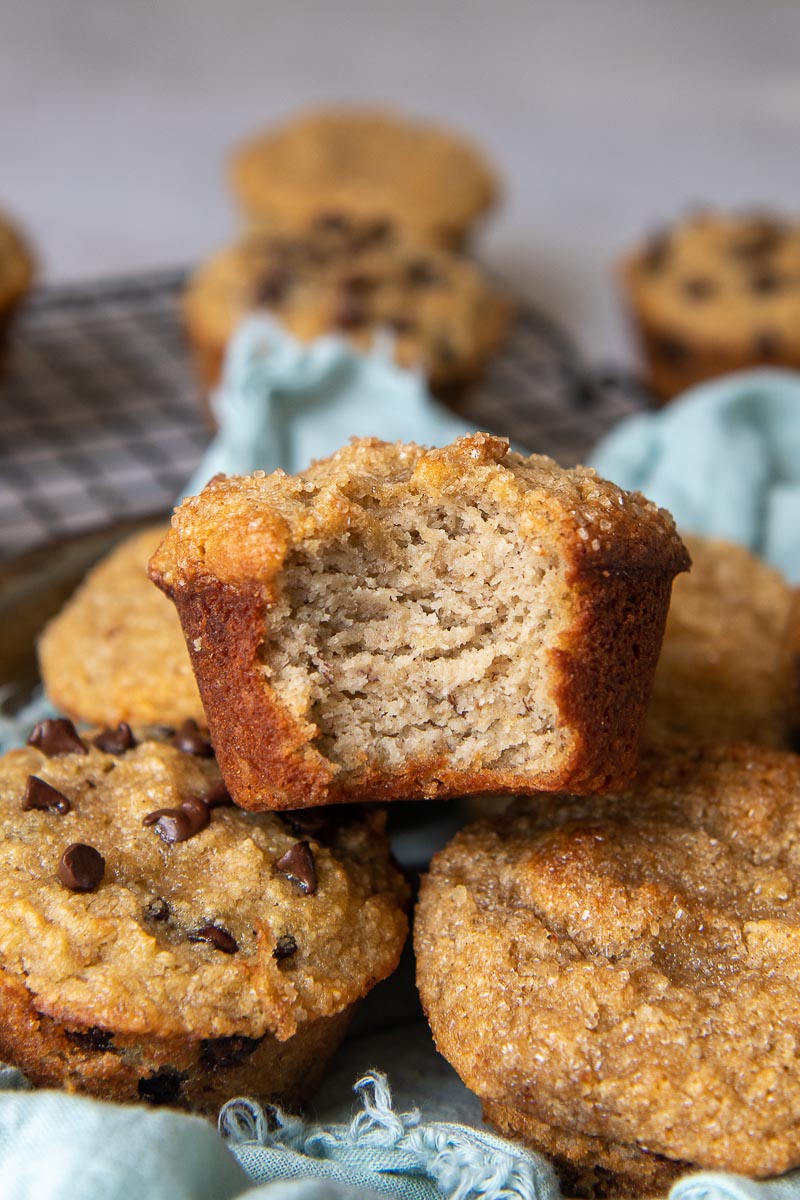
20. Gluten-Free Zucchini Bread with Almond Flour
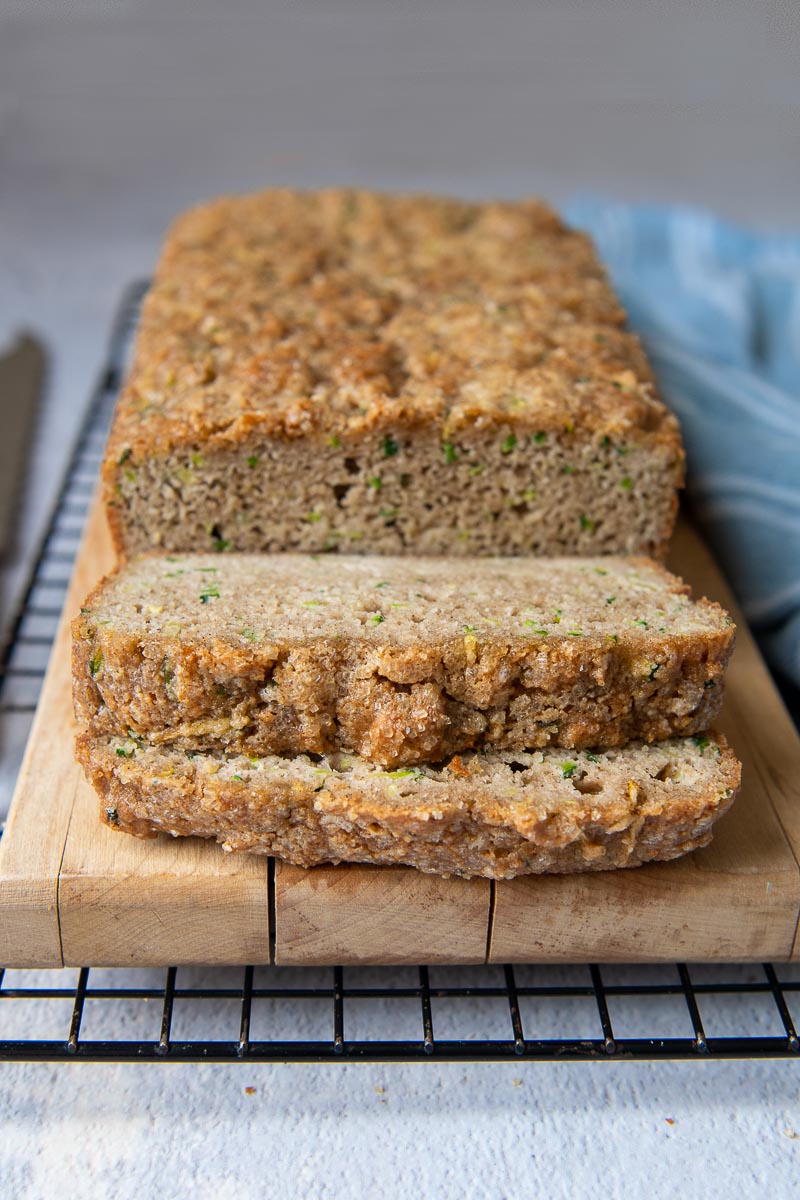
21. Almond Flour Chocolate Chip Muffins
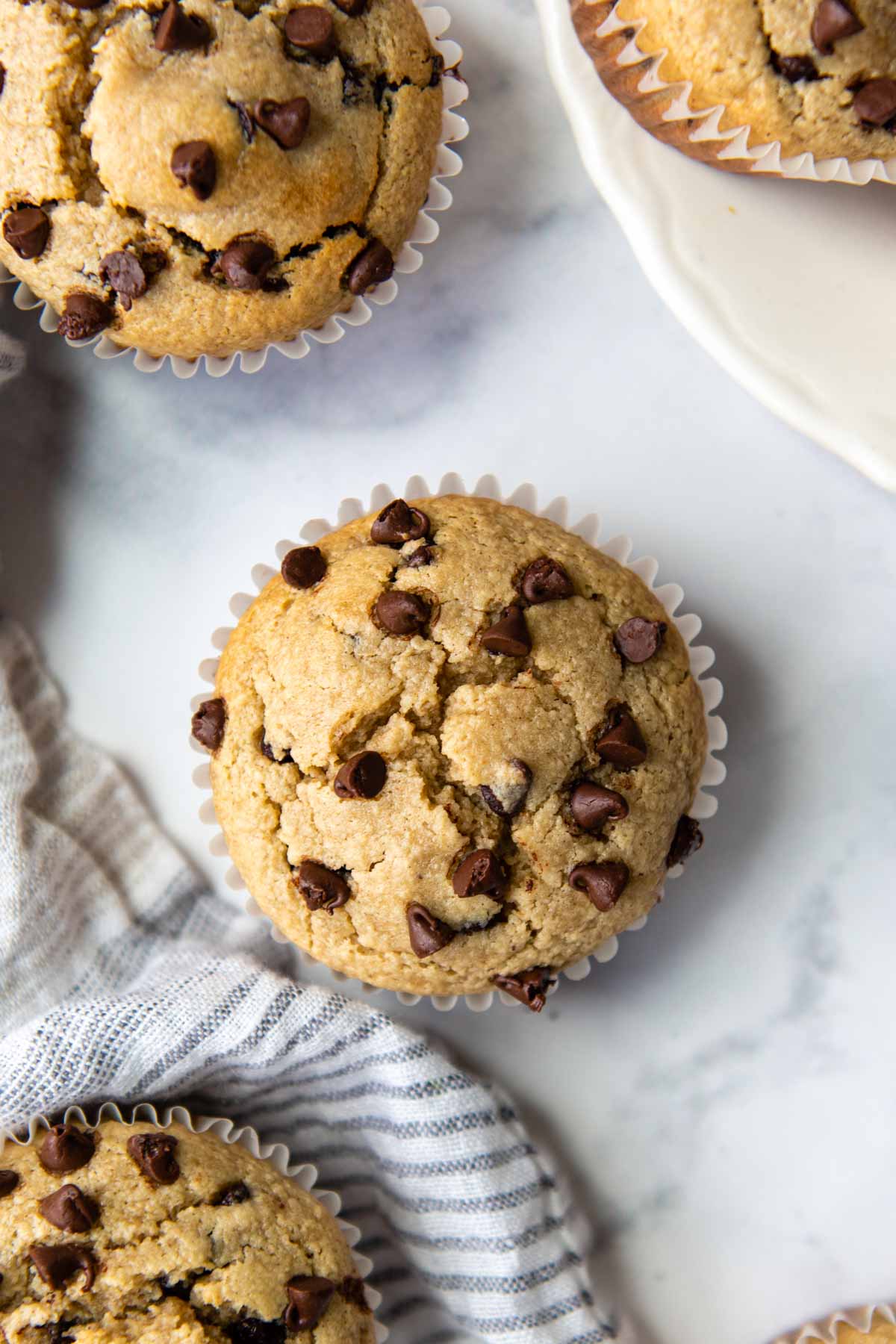
22. Moist Almond Flour Banana Bread with Oil
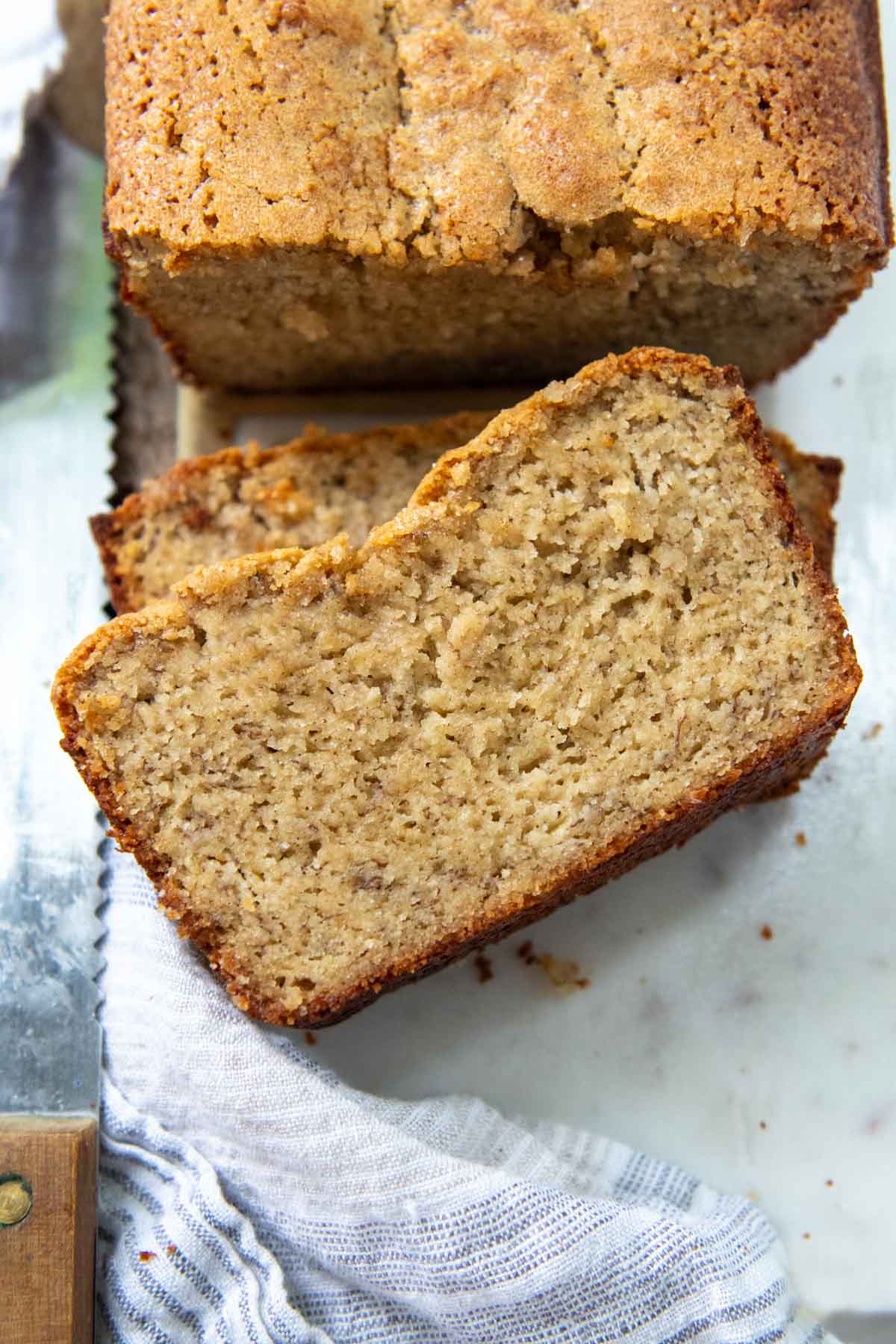
23. Almond Flour Zucchini Muffins
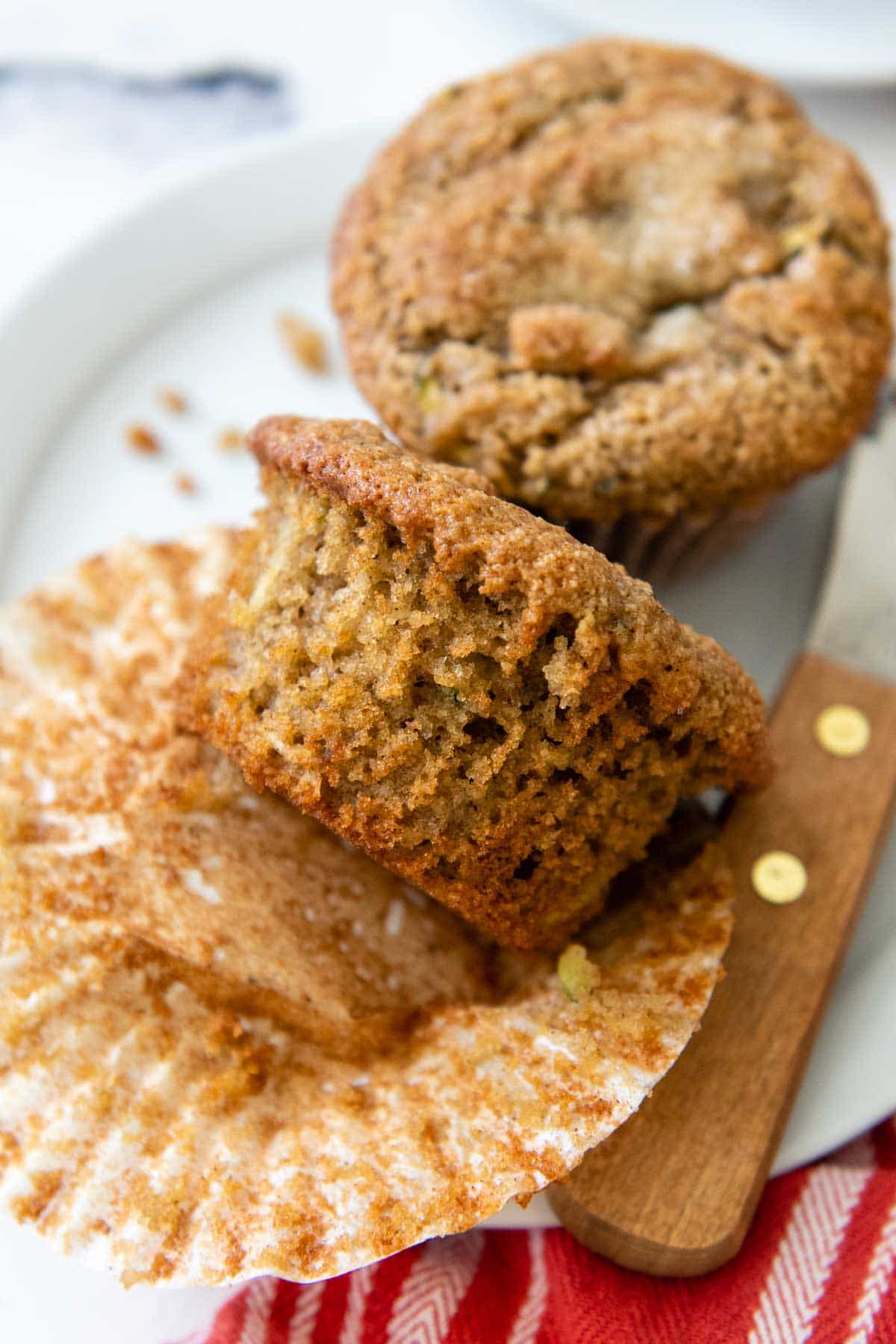
Savory Almond Flour Recipes – dinners and snacks
Almond flour can be used in many savory dishes, as well as sweets. Consider using it in lunch, dinner, snacks, and savory dish recipes to decrease carbs and create dishes for the family.
24. Easy Almond Flour Tortillas (Soft & Flexible)
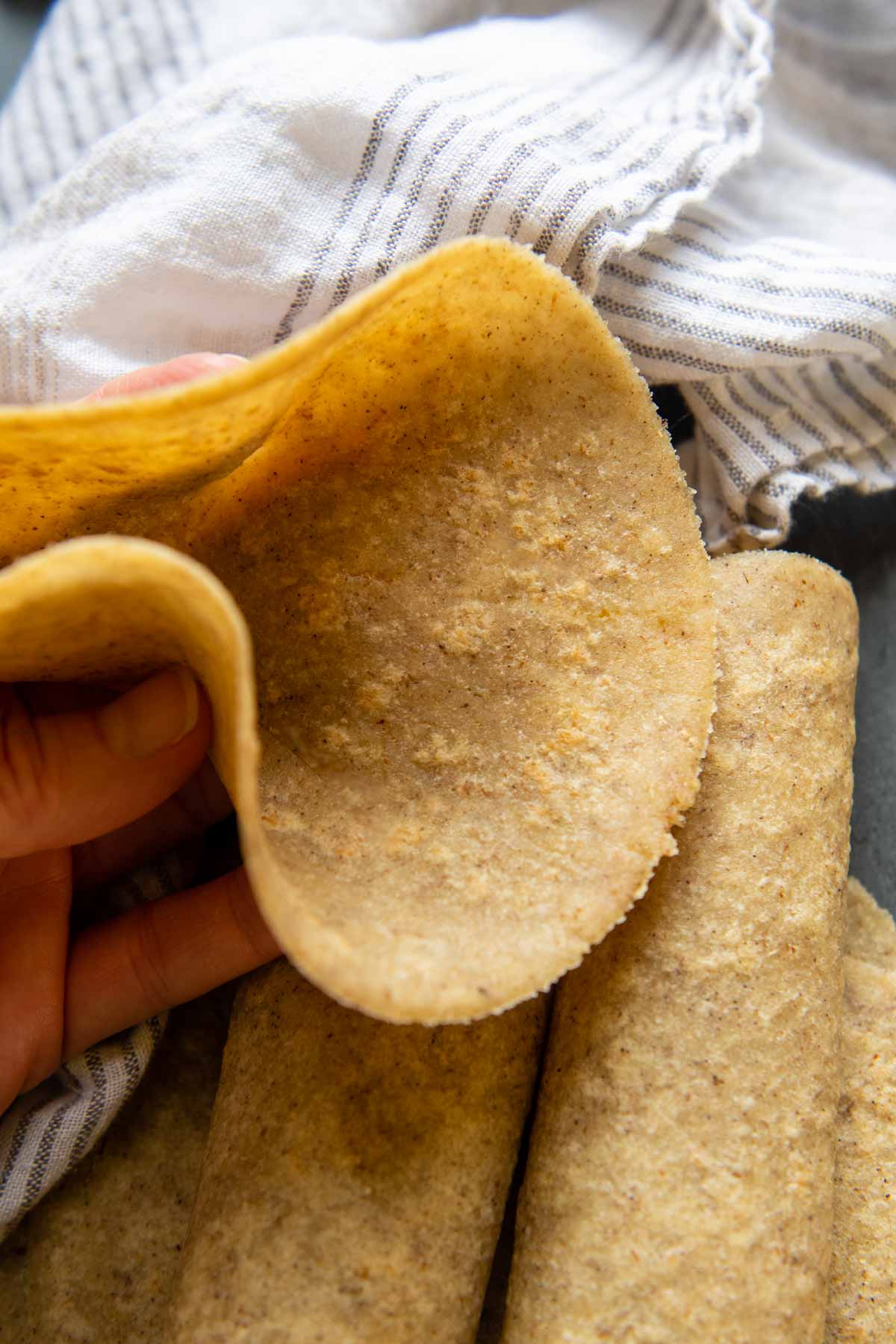
25. Crispy Gluten-Free Baked Chicken
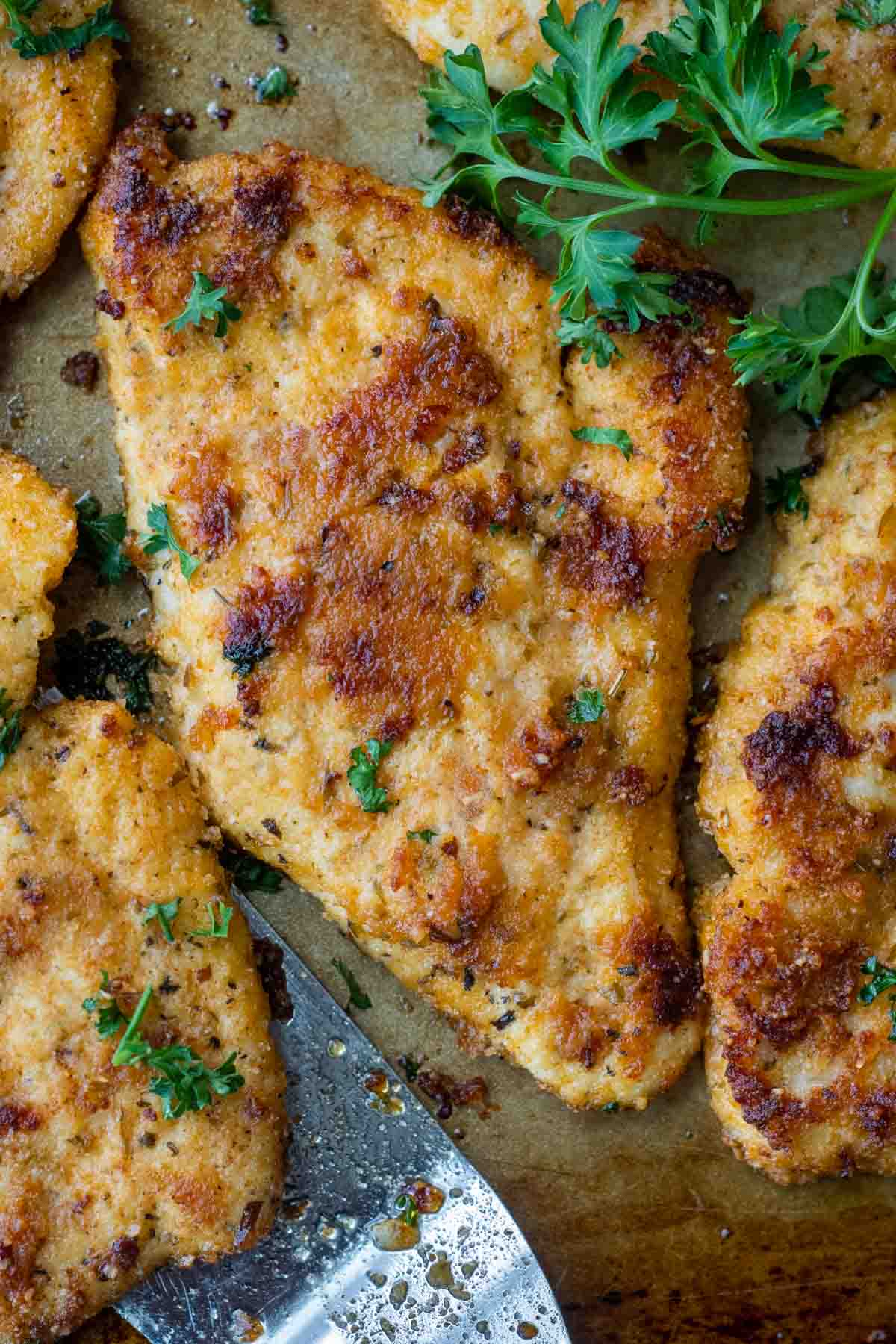
26. Crispy Gluten-Free Mozzarella Sticks (No Breadcrumbs)

27. Breaded Oven Pork Chops (Gluten-Free / Low Carb)
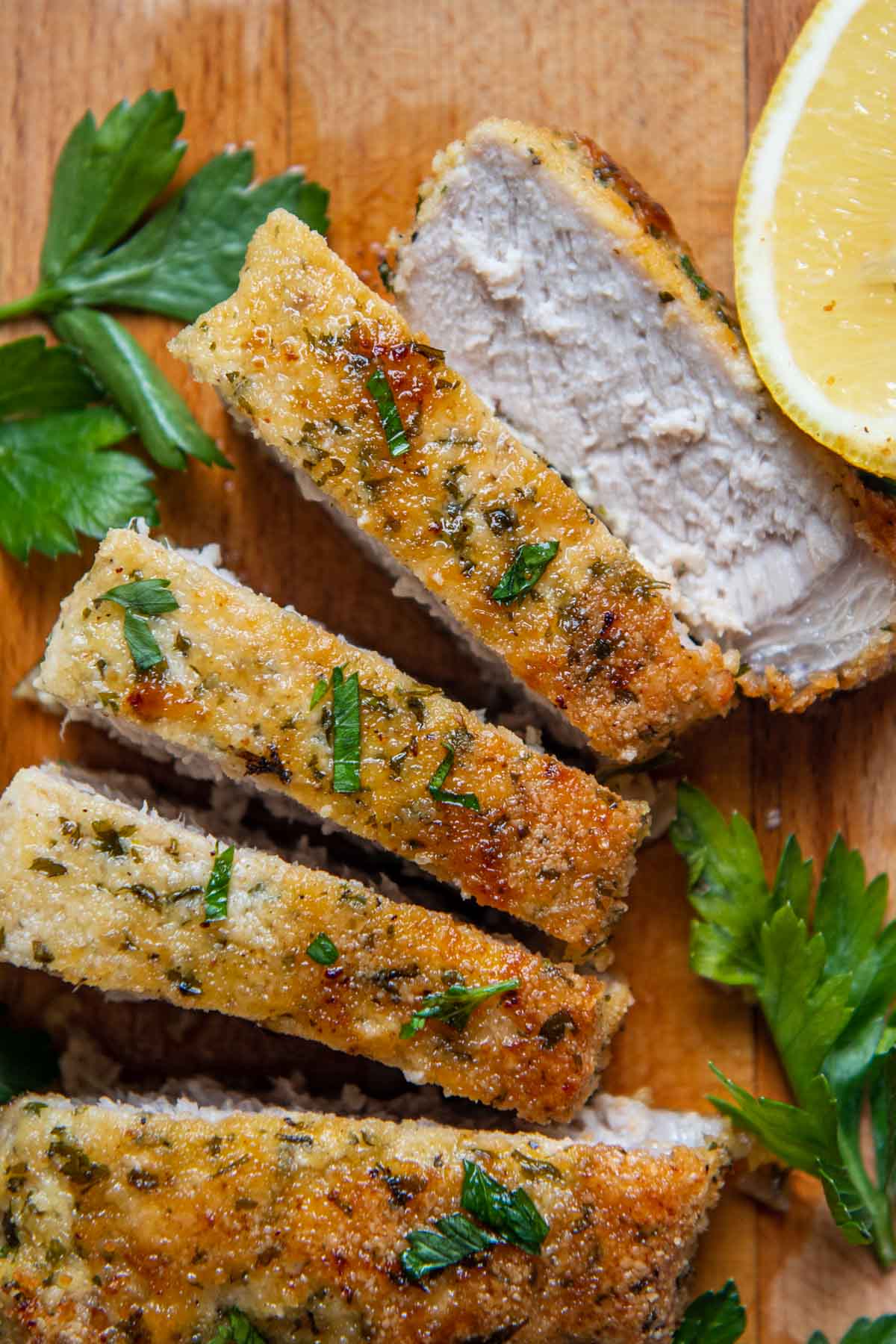
28. Crispy Gluten-Free Zucchini Fries (Baked or Air Fryer)
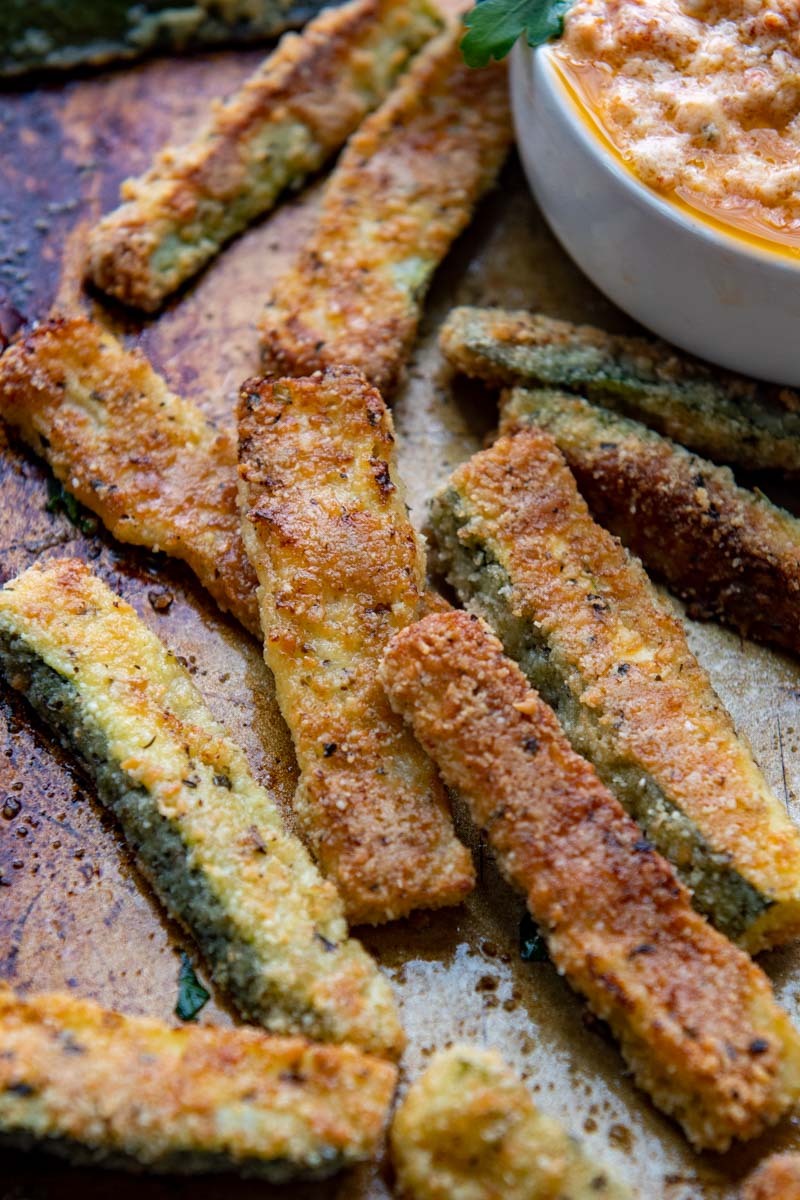
29. Low Carb & Gluten-Free Eggplant Parmesan
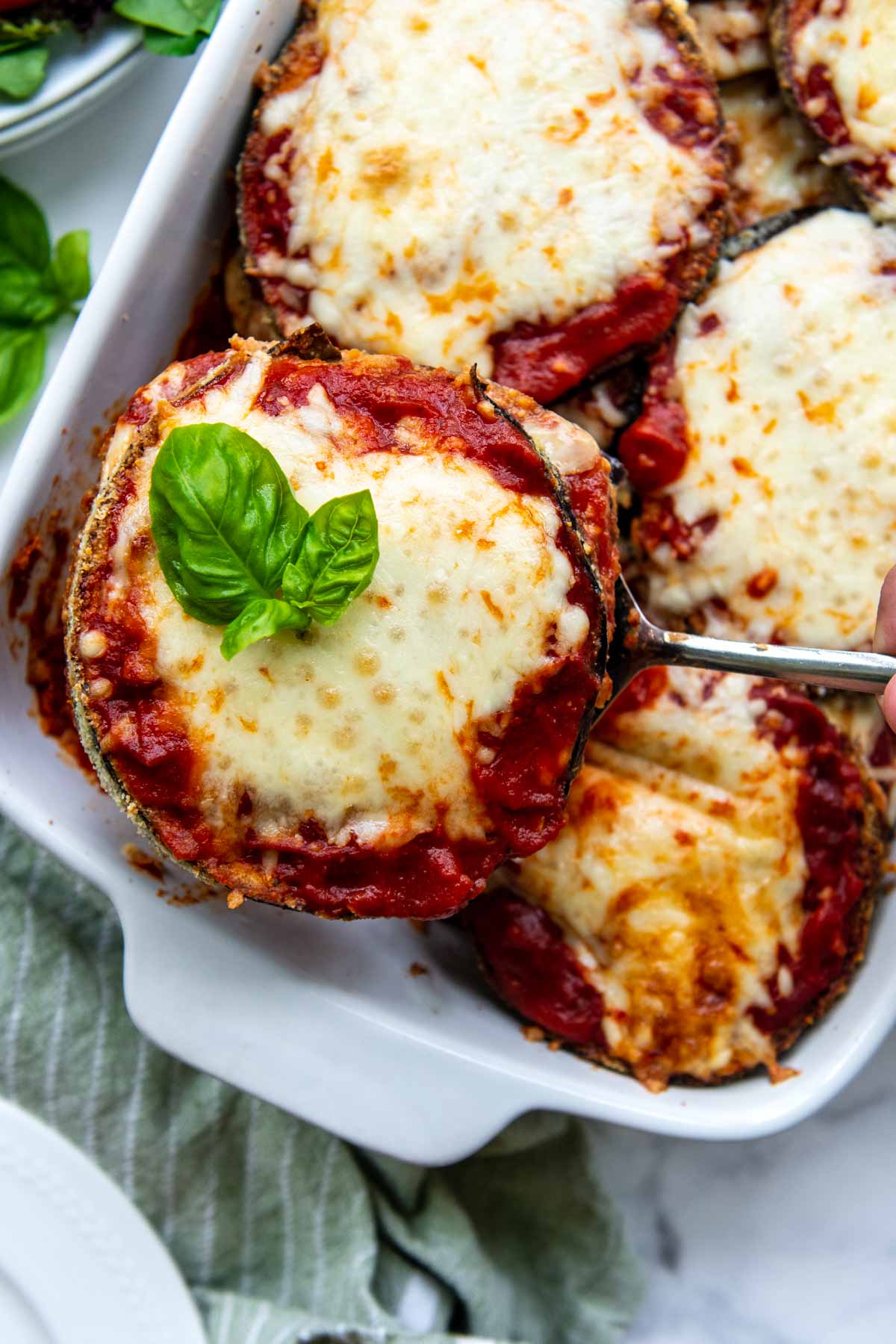
Can I Make Almond Flour At Home?
Yes. Making almond flour, or almond meal, at home is both simple and cost effective. With little equipment, and some almonds, you can learn how to make almond flour in no time!
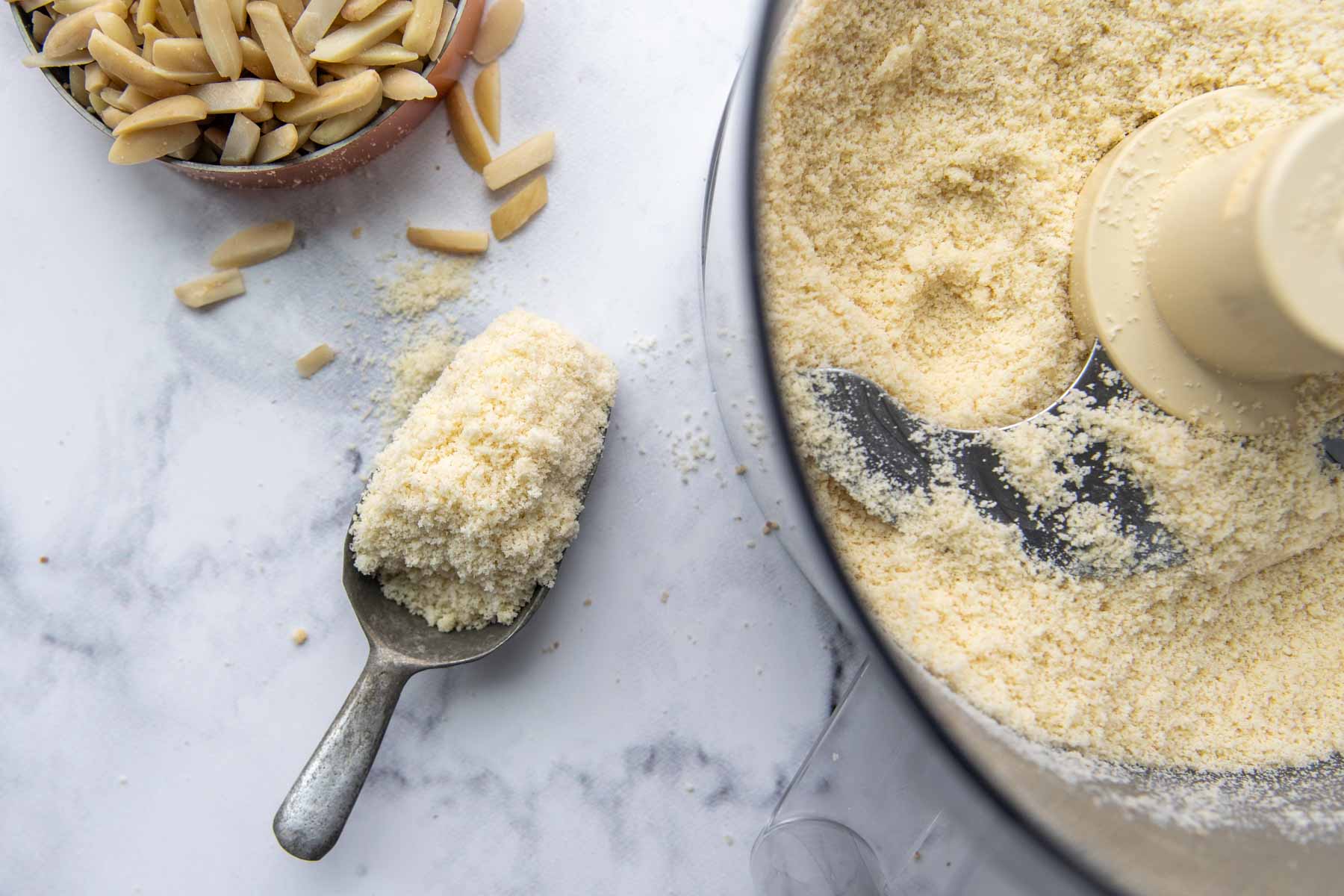
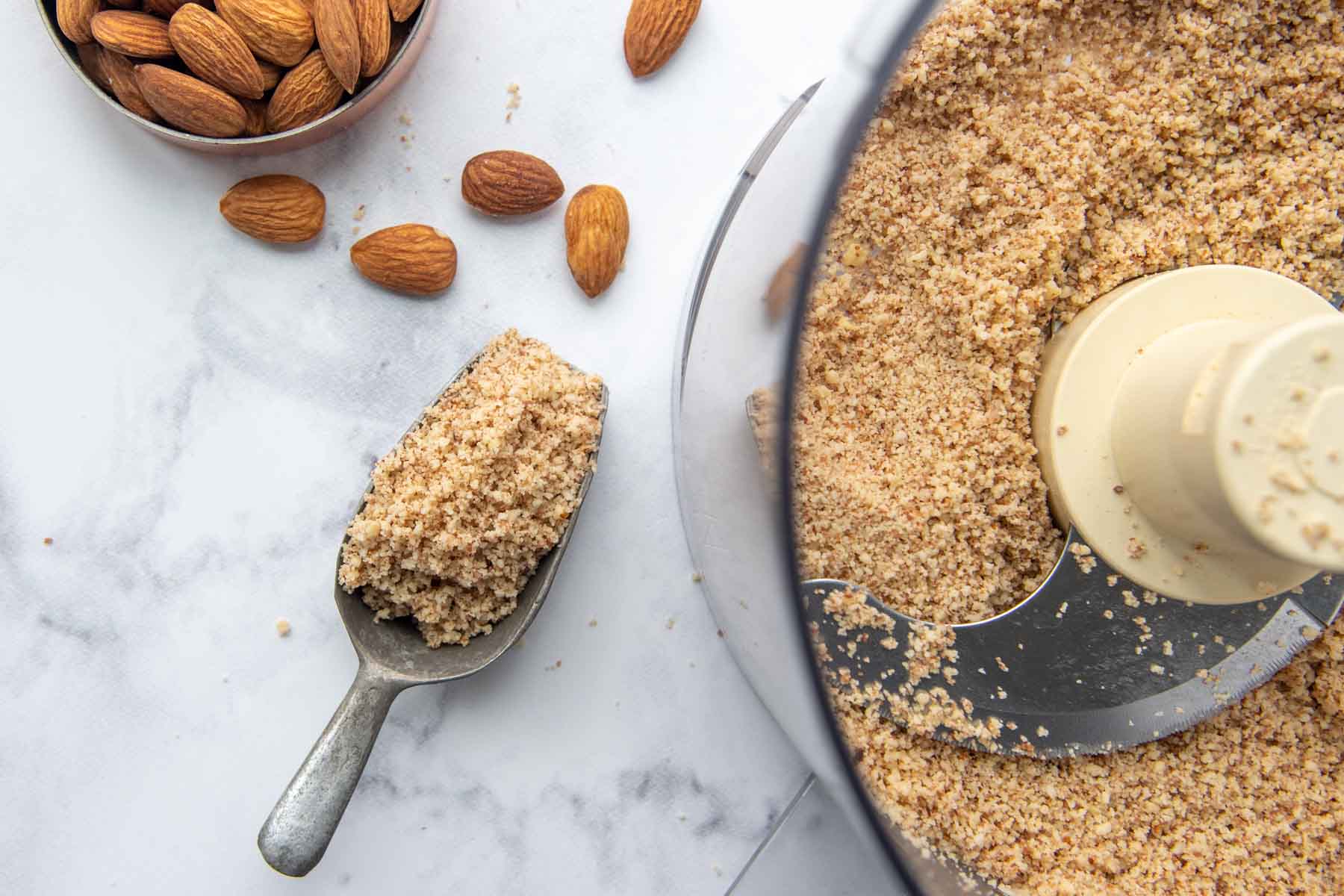
Equipment needed:
- Food processor or blender
- 8 ounces unsalted almonds, blanched or unblanched
How to Make Almond Flour or Meal:
- Place blanched, or unblanched, almonds into a food processor or blender. Blanched almonds are used for almond flour, while unblanched are used in almond meal.
- Pulse the almonds in short bursts until they are finely ground. Be sure to not over-process or the oils will release and you will end up with almond butter!
Tips to Remember:
- For a more finely ground flour, a powerful blender works better than the food processor.
- You can use more than 8 ounces of almonds, but for best results – do not grind more than 8 ounces at a time.
- Starting with almonds that are cut, slivered, or chopped will process quicker and yield better results.
How to Blanch Almonds
If you would like to blanch your own almonds bring a small pan of water to boil. Toss in raw, unsalted almonds and boil for 60 seconds. Drain the almonds and rinse with cold water to cool them off. Lastly, squeeze each almond to remove the skin.
What Can I Make with Almond Meal?
- Fruit crumble
- Gluten free bread crumbs for casseroles
- Meatballs
- Scones
- Crust for proteins such as pork, chicken or fish
- Tortillas
- Pizza crust
- Biscuits
How to Store Almond Flour
Almond flour is best stored in a cool, dark place for up to one year. If you use it frequently, store in an airtight jar or container in the refrigerator.
It may also be stored in the freezer, but allow it to come to room temperature before using for baked goods.
Substituting Almond Flour for Regular Flour
Because of the weight of the flours, a one-to-one conversion isn’t always possible. In addition to weighing less than regular flour, almond flour also contains more moisture, which changes the chemistry of baked goods.
It’s tempting to replace regular flour with almond flour in recipes because of its many benefits – like being grain and gluten free, as well as low carb. If you’d like to experiment on your own, keep some of the following tips in mind:
- Increase the amount of almond flour by 25%, so for every 1 cup flour, use 1 1/4 cup almond flour.
- Add extra leavening to offset the density of almond flour. 1/4 – 1/2 teaspoon of baking powder, baking soda, or combination of both will help.
- Use less liquid in the recipe since almond flour adds more moisture. Using an egg yolk instead of the whole add egg or cutting back on moisture containing ingredients, such as milk, bananas, applesauce, or sour cream.
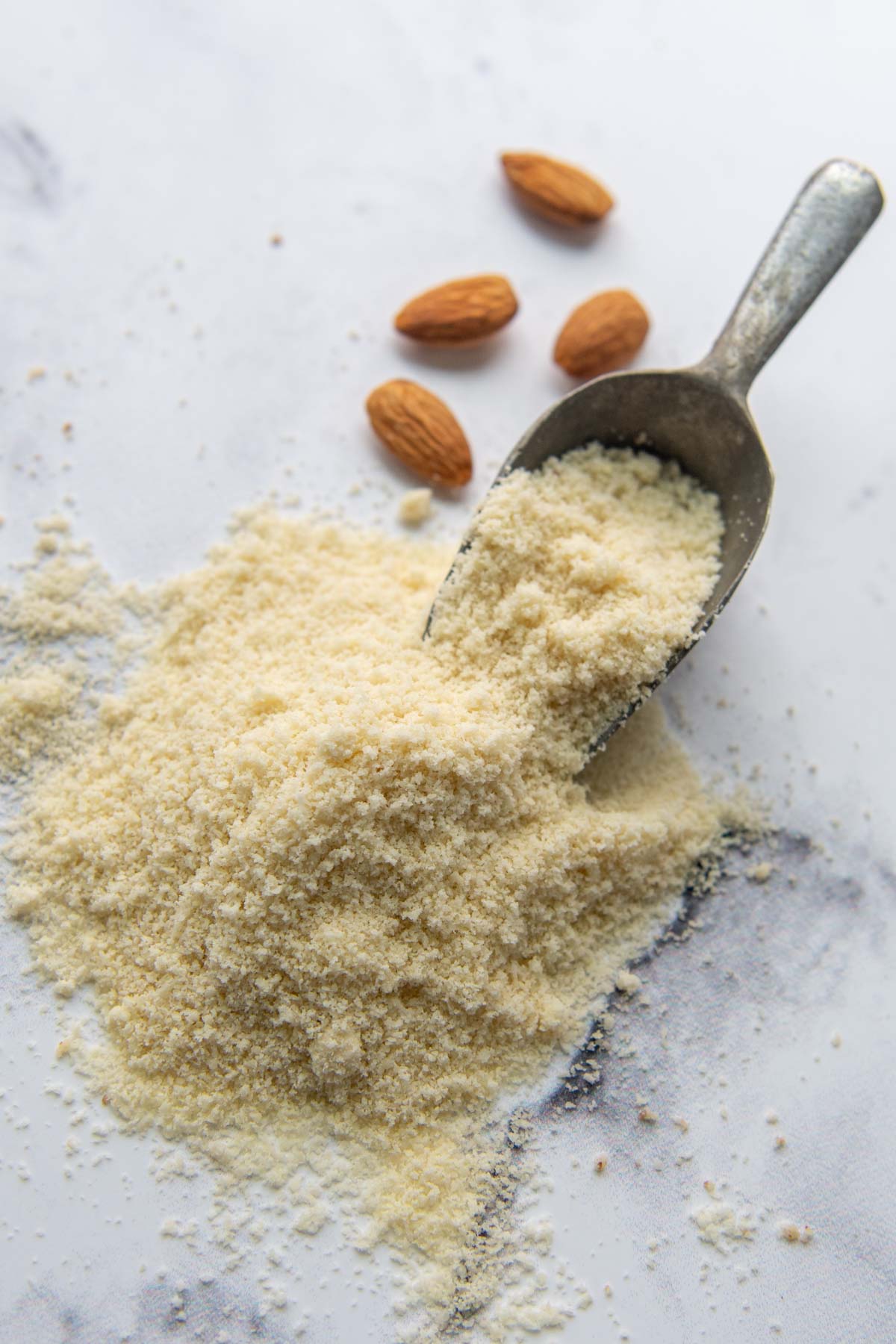
SAVE Easy ALMOND FLOUR RECIPES PINTEREST BOARD!
Let’s be friends on Pinterest! I’m always sharing great recipes!
30+ Almond Flour Recipes: Frozen Lemon Pie
Equipment Needed
Ingredients
- 1 Almond pie crust, baked and cooled
- 2 cups heavy cream
- 1 cup sugar
- 1 teaspoon vanilla extract
- 1 tablespoon lemon zest (zest lemons before juicing)
- ½ cup freshly squeeze lemon juice, about 2-3 lemons
- 1 cup plain greek yogurt
Meringue Topping
- 4-5 large egg whites*, room temperature
- ¼ teaspoon cream of tartar
- ⅓ cup sugar
Instructions
Frozen Lemon Pie Filling
- In a medium saucepan combine heavy cream with 1 cup sugar. Bring to a boil over medium heat, stirring until the sugar dissolves. Reduce heat to low and let simmer for 3 minutes, stirring occasionally. Remove from heat.
- Add the vanilla extract, lemon zest, lemon juice, and yogurt. Whisk vigorously until well combined and no lumps remain. Alternatively, use a hand mixer on LOW speed to combine.
- Set aside lemon cream filling to cool to room temperature, about 30 minutes. Once the filling has cooled, pour into prepared pie crust, and freeze until solid, about 6 hours to overnight.
Meringue Topping
- Preheat oven to 500°F. In a large bowl beat the egg whites and cream of tartar until frothy.
- Gradually add the ⅓ cup sugar, a couple tablespoons at a time, beating continuously. Continue to beat until stiff, glossy peaks form.
- Spread the meringue on top of the frozen pie, sealing all the way to the edges so no filling is exposed. Bake until peaks turn golden brown, about 3 minutes.
- Either slice and serve immediately or return back to the freezer until ready to serve. If refreezing, let the pie sit out for 20-30 minutes before slicing or refrigerate one hour before slicing. Freeze any leftovers.
- DID YOU MAKE THIS RECIPE?? DON'T FORGET TO LEAVE FEEDBACK AND RATE BELOW!
Recipe Notes
Best Tips
- Swap out yogurt with 8 ounce softened cream cheese, 1 cup sour cream, or mixture of ingredients as long as it equals 1 cup.
- If using cream cheese instead of yogurt, make sure it’s softened and cubed, then beat on LOW speed to make the lemon filling smooth and homogeneous.
- Remember to zest the lemons first before juicing.
- For extra lemon flavor swap out vanilla extract for lemon extract.
- Instead of topping with meringue, spread on homemade whipped cream, Cool Whip, sprinkle with toasted coconut, or fresh berries.

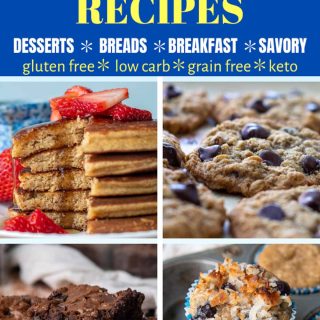

Leave a Reply